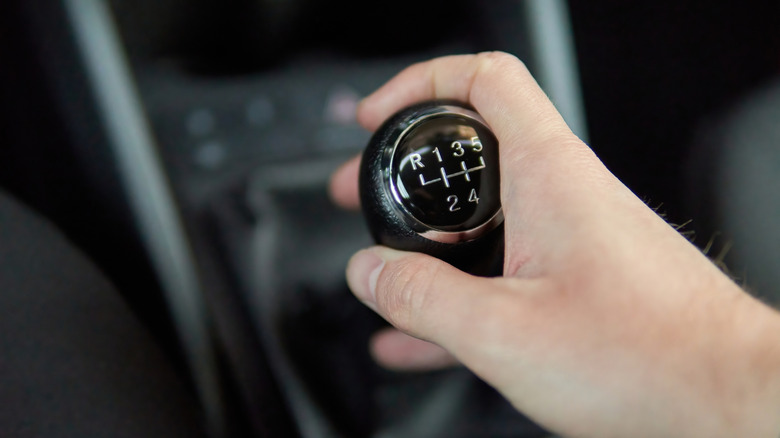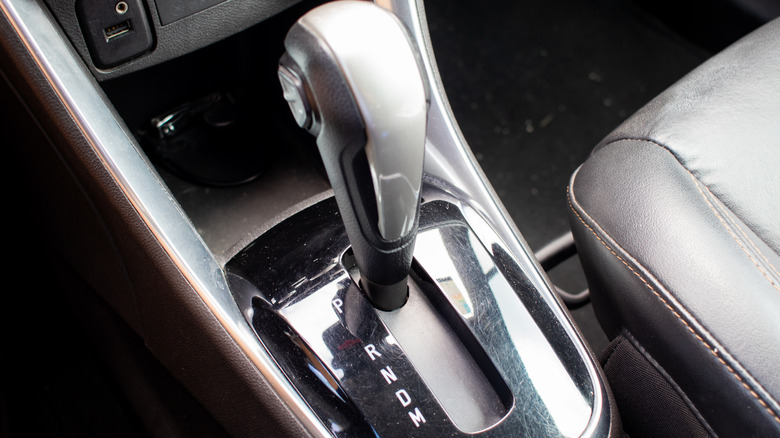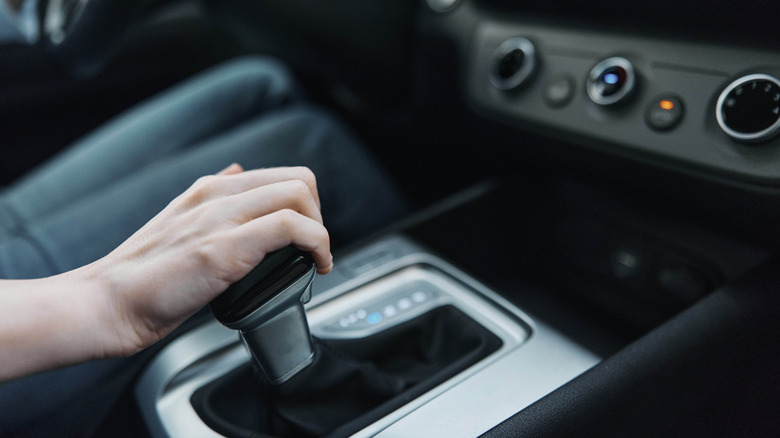This Is What Happens When You Shift Your Car Into Park While Driving
We've all thought of doing it at some point while on the road: shifting into park while driving. But then, most of us are either not brave enough to do it or not curious enough to find out what will happen next. Manual car drivers have likely skipped gears while driving at some point, but it's a different thing when you intentionally hit park while the vehicle is running 60 mph on the highway. According to Engineering Explained, manual transmission cars allow shifting between any gears at any time. However, there are minor consequences to doing so, such as experiencing a lurch or causing a bit of clutch wear.
Compared to shifting gears, switching to park forces the car to a halt, regardless of whether it's a manual or an automatic. If you know how an automatic transmission works, you already have an idea that a pin called the parking pawl engages with a gear tooth to stop the notched wheel from spinning when the vehicle is in park mode. Manuals do not have this pin and instead rely on the handbrake to keep them stationary when parked. In other words, manual transmissions do not really have a dedicated "park" position. So, in theory, shifting to park while driving a manual wouldn't cause the car to stop, unless you step on the brake pedal.
Shifting into park while driving an automatic has consequences
Given the automatic transmission's parking mechanism, it's not wrong to assume that suddenly shifting into P while in D position will force the parking pawl to engage. But in reality, modern automatics have a safety mechanism that prevents the pin from latching while driving or until the car is stopped. This explains why it's better to engage the emergency brake first before shifting to park to prevent transmission problems caused by the aggressive interaction between the pawl and the gear. Forcing the shift into park while driving does the same. The ratcheting sound you'll hear will likely come from the pawl trying to slide between the teeth of the revolving gear.
We can infer at least three possible scenarios for when the parking pawl engages. The first is that it successfully gets into a slot and locks the gear in place, but then this is the most unrealistic, considering the gear is revolving at high speeds. The forces turning it could be too strong to counter or stop the vehicle. The next possibility is that the pawl slides into a gap and gets snapped off by the gear. The last would be that the pawl fails to get into a gap and instead causes friction with the revolving gear. Whichever the case may be, damage to both the gearbox and the pawl seems bound to happen. Mind you, repairs concerning the transmission can be very expensive.
Some people have tried it so you don't have to
Knowing the cost of automatic transmission repair, it's not worth trying to shift your car into park while driving to see what will happen. Aside from the damage you need to deal with afterward, there's also the risk of things taking an accidental turn when your gearbox and shifter decide to become unresponsive mid-drive. But in case you really want to know what's bound to happen, some people have already tried it and even documented it online, so you won't have to.
The YouTuber running the Garage Sideways channel tried it with a Nissan sedan, and he was somewhat disappointed when nothing remarkable happened after switching to park while running the vehicle at 35 mph. Another YouTube content creator responsible for the AutoVlog channel did the same, but at higher speeds of 60 to 65 mph. The result was just as anticlimactic. However, according to him, though nothing seemed to happen when he shifted the gear, he did hear a subtle scratching sound from the transmission. He also noted that it was hard to switch the shifter back to drive after. In the end, he concluded that his transmission might have suffered from his experiment even though nothing horrible overtly happened.


